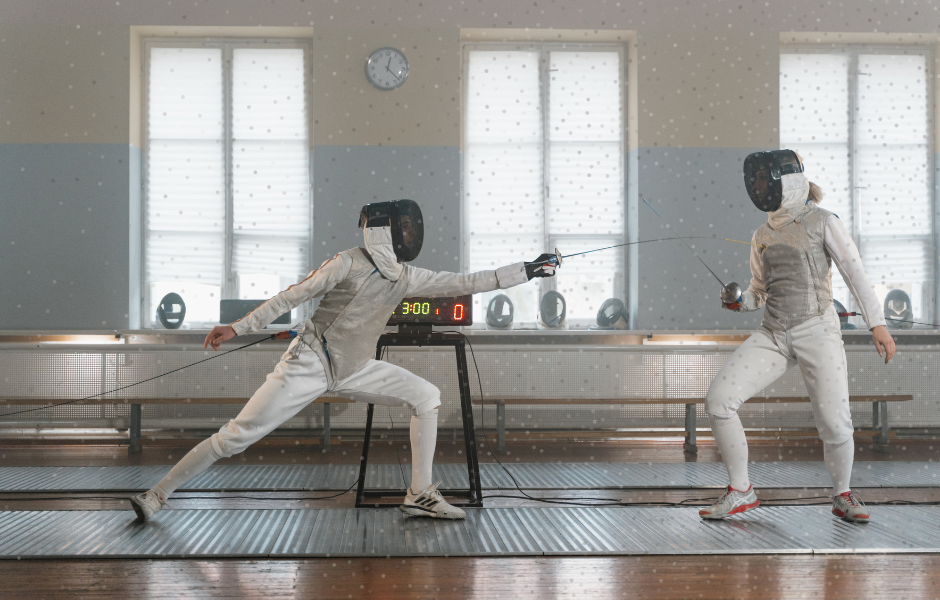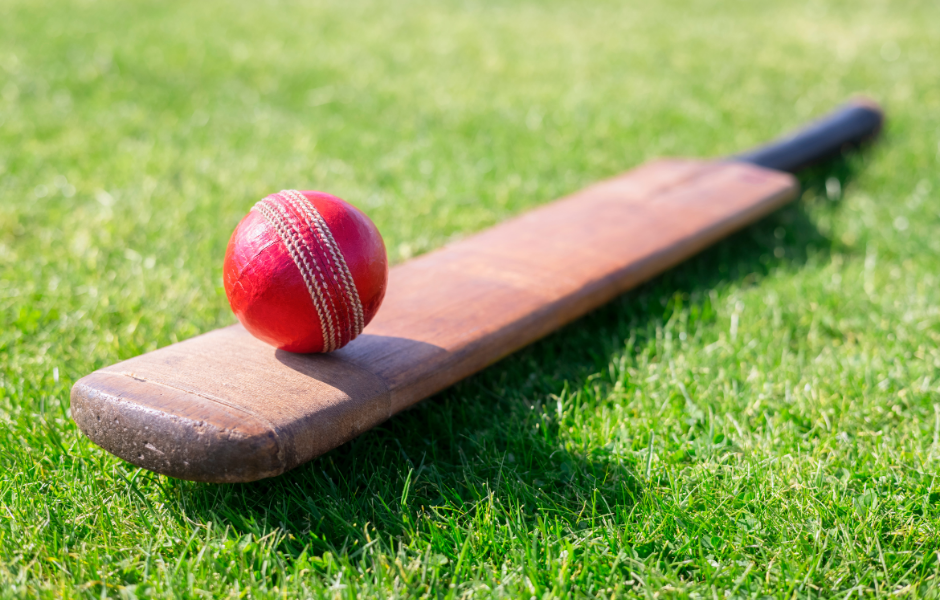
This children’s article, What is fencing, and how does it work?, has been written for native English speakers and learners of English as a second or foreign language. It can help children practise reading and comprehension, learn useful vocabulary, and explore the exciting Olympic sport of fencing. Written by Sinead O’Carroll, an experienced teacher and writer.
Sword fighting becomes a sport
Fencing is a fast and skilful combat sport where two athletes duel using swords.
Each fencer tries to score points by hitting their opponent, while also avoiding being hit themselves. Fencing takes place on a long strip of floor called a piste, and matches are judged by electronic scoring.
How did fencing begin?
The sport has its roots in military training and sword duels. Ancient drawings show sword fighting as far back as 1190 BC in Egypt.
By the 1600s and 1700s, fencing had become popular as a sport. People no longer fought to hurt each other but to show speed, skill, and control.
Special safety rules were introduced, and new equipment such as wire masks and flat-tipped swords were invented.
A classic Olympic event
Fencing is one of only five sports that have been part of every modern Olympic Games since they began in 1896.
Today, Olympic fencers train for years to become experts in attack, defence, and footwork.
Matches are short but intense, with fast moves, clever tactics, and lots of concentration.Each match lasts for three rounds of three minutes. The clock stops after each phrase – a short burst of action. The first person to reach 15 points wins the match.
Foil, épée and sabre
There are three types of fencing weapons: the foil, épée, and sabre. Each one has different rules and target areas.
The foil is a light weapon that can only hit the torso, the middles section of the body. The fencer must use the tip of the blade to score a point. The torso is covered by a special electric vest called a lamé.
The épée is heavier and can hit the whole body. Like the foil, it is a thrusting weapon, so only the tip counts. There is no lamé, as every part of the body is a valid target.
The sabre is different because it is both a cutting and thrusting weapon, meaning fencers can score points by poking with the tip (thrusting) or slashing with the side of the blade (cutting). The target area is the upper half of the body, including the arms, mask, and neck.
Speed, balance, and brainpower
Fencing is often called “physical chess”. That is because it needs not just fast movements, but also smart thinking. A good fencer must know when to attack and when to wait. Balance, timing, and quick decisions are key.
To learn more about fencing and the Olympics, you can visit the official Olympics website.

Article vocabulary list
- Fencer – A person who competes in fencing
- Duel – A formal fight between two people using weapons
- Piste – The narrow strip where fencing takes place
- Thrusting – A pushing movement using the tip of the sword
- Target area – The part of the body where hits count as points
- Lamé – A special vest used in foil and sabre fencing to show hits
- Phrase – A short section of action in a fencing match
- Conducting material – A material that allows electricity to pass through it
- Foil – A light fencing weapon that scores with the tip
- Épée – A heavier fencing weapon that can hit the whole body
Comprehension questions
Just click the plus (+) to see the answer
1. What do athletes use to compete in fencing?
a) Bows
b) Swords
c) Sticks
Answer: b) Swords
2. Which three weapons are used in Olympic fencing?
Answer: Foil, épée, and sabre
3. What is the target area in foil fencing?
a) The whole body
b) The legs and feet
c) The torso
Answer: c) The torso
4. What does the word “piste” mean in fencing?
Answer: The strip of floor where fencers compete
5. What makes a sabre different from a foil or épée?
a) It is used underwater
b) Fencers can score with the whole blade
c) It is heavier
Answer: b) Fencers can score with the whole blade
6. How many points does a fencer need to win a match?
a) 5
b) 10
c) 15
Answer: c) 15
Sinead is a writer and EFL teacher with eight years’ experience. She’s a native English speaker who loves making news stories fun and easy to understand for children around the world. Her passions include travel, animals, and helping to make the world a kinder, more sustainable place.




